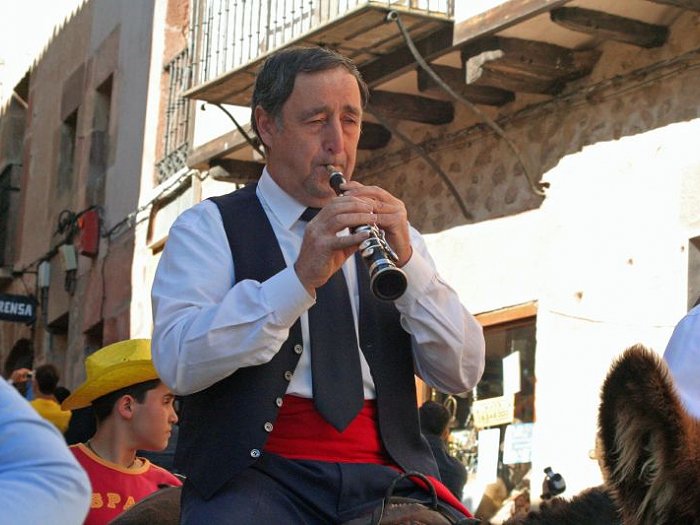
As you know, the marvellous sport facilities at our golf resort are complemented by the great cultural richness you can experience near La Manga Club. Many owners, first attracted by our amazing resort, soon discover with delight that they have access to not only the best beaches and pure nature, but also the tradition, cuisine and folklore of Murcia that appear in countless local festivals for natives and visitors alike. Today we introduce you to the sounds of the pita or dulzaina and the emblematic popular figure of the street musician who makes appearances at local festivals: the Tío de la Pita.
The pita or dulzaina, as you will have already gathered, is a musical instrument, specifically a wind instrument, similar to the chirimía, that emits sharp notes that can be cut extremely short, producing a very intense sound. It derives from ancient Mesopotamian culture and arrived in the Iberian Peninsula with the Greco-Latins. Though originally it was played in the courts, it soon passed into popular culture to play protagonist in celebrations related to the arrival of spring, the harvests, and the fertility of the earth.
In fact, in towns close to La Manga Club, the Tío de la Pita continues to make annual visits. Whether professional or amateur, the majority of times he arrives from unknown origin. He comes in the midst of a clamouring crowd, usually surrounded by children, and plays catchy traditional tunes. After performing for a few days, he leaves without a trace.
He’s a figure that is, without a doubt, enigmatic, and whose existence is tied to ancient rites related to growing crops in agricultural zones, in which he helped nature along with the dulzaina or pita, accompanied by the beats of a drum usually played by a child.
Popular tradition attributes to the sounds of the Tío de la Pita the power to bring forth the sap that spurs the growth of plants and chases away bad spirits, friends of the cold of winter, to dispel the noxious effects of plagues that stalk the reawakening of the earth. The drum, with its light rhythmic beat, amplifies the magic effects of the pita.
Thus, in the era of the Renaissance, this magical tradition was perpetuated as a symbol of the end of the trials of winter, and it arrives to us today in the form of popular festivals. As a tradition, it compares with other religious ones like the “Conjuros” and the song of the “Letanías de los Santos” in the days before the 25th of April, the day of San Marcos, on which God was asked to make the fields fertile and protect the harvests. These music, traditions, and popular festivals give the surroundings of La Manga Club a truly special charm.
Don’t miss the chance to learn more first-hand! Plan an excursion and enjoy a day away from our leisure resort, because it’s truly worthwhile. There are three places where you can see performances by the Tío de la Pita: Caravaca, Blanca, and Bullas, though he occasionally plays in other towns as well.
You only have to leave behind the comforts of your property at La Manga Club for a few hours to throw yourself into an adventure. And if you have the fortune to come into contact with this ambulatory musician, take advantage and dance to the magical sounds of his pita. According to legend, it not only prepares the earth for the harvests, but also purifies the human soul and offers a life filled with wealth and prosperity. A true luxury, right here near La Manga Club!
Recent posts
-
08/12/25
Celebrate the 1200th anniversary of the city of Murcia from your property at La Manga Club
- 10/11/25
- 23/10/25
-
14/09/25
Thinking of buying property at La Manga Club? These 7 insights might just convince you
-
10/08/25
Looking for a day out from your home at La Manga Club? Visit the Ricote Valley and Cieza
-
18/07/25
Las Acacias: Buying a Luxury Villa in Spain’s Premier Golf Resort
-
23/06/25
Buying Property in La Manga Club: Discover the 5 Must-See Highlights of the Calblanque Regional Park
-
15/05/25
Dive just minutes from your La Manga Club home: the Islas Hormigas Marine Reserve